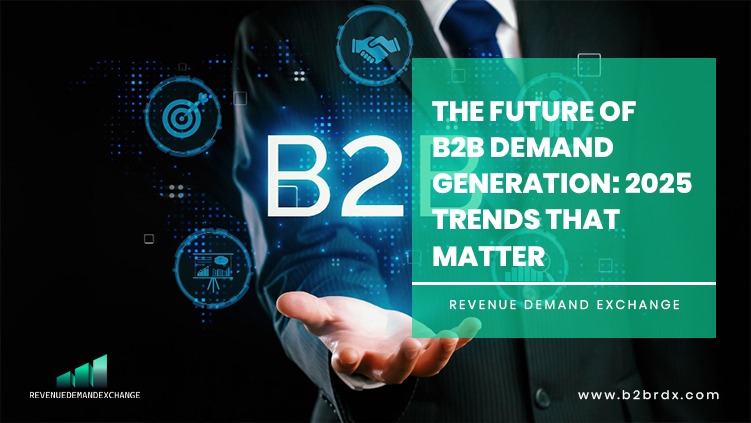The Future of B2B Demand Generation: 2025 Trends That Matter

The way businesses generate demand for other businesses will alter in 2025 in ways we’ve never seen before. Digital innovation, buyer-centered strategies, and quantifiable performance will be at the top of the list. Companies who can adapt to these new trends will be able to develop, make greater connections, and stand out in a market that is already crowded.
AI and Automation Are Now Taking the Charge
Artificial intelligence and automation are becoming more and more significant for B2B marketing these days. Businesses may go ahead by adopting AI-powered technologies to score leads, do predictive analytics, and divide customers into groups. These technologies help them find the proper individuals and get in touch with them in a way that works for them. Smart automation solutions make processes easier, which frees up time and energy for you to make strategic choices and come up with new campaign ideas. Companies that employ AI will be able to give customers hyper-personalized experiences and acquire vital information that will help them maintain their marketing efforts relevant and scalable in 2025.
Account-Based Marketing (ABM) Gets Personal
Account-Based Marketing (ABM) Personalized ABM tactics are no longer only about obtaining new consumers; they also encompass keeping current customers pleased throughout their entire engagement with the organization. Using data, leaders in demand generation are investing money on highly targeted messaging for prospects who are likely to be valuable. This strategy makes connections stronger, maintains clients longer, and gives you more chances to make purchases. Automated alert systems, real-time engagement data, and communication across all channels are all part of modern ABM. This makes sure that important accounts are appreciated and helped at every step of the collaboration.
Content Marketing: Performance-Driven and Educational
In 2025, content is more than simply king; it’s the basis for performance marketing that can be measured. Most B2B buyers today conduct their homework before talking to sales teams, so it’s more vital than ever to provide content that is strategic, informative, and makes people think. Brands need to make resources that span both the selection and validation stages, publish case studies, and cultivate connections with potential consumers throughout extended purchasing cycles. People are more likely to do their own research and become involved with leads when they see high-quality material that is optimized for search engines and can be shared on many platforms.
Voice Search and Conversational Marketing
It’s crucial to make sure that websites and messaging applications are equipped for natural language searches and chatbots as voice search and conversational marketing grow more popular. These solutions help businesses communicate to potential consumers in real time, answer their queries, and make it easier for them to buy things. Brands need to make sure that people can find and consume their content on all digital platforms as audio material like podcasts and interactive webinars becomes more popular.
Data-Driven Insights and First-Party Data
The shift to performance marketing places greater emphasis on critical KPIs. Marketers may utilize first-party data collecting to find out when consumers are ready to buy, keep track of how interested they are, and adjust their efforts to obtain the greatest results. By frequently updating customer profiles and exploiting buyer intent signals, organizations can keep ahead of shifting expectations and deliver solutions that are personalized to each set of stakeholders.
Sustainability and Social Responsibility
In 2025, B2B buyers will be more inclined to do business with organizations that care about being socially responsible and environmentally friendly. Clear reporting, authentic tales, and tangible impact projects are no longer optional. It’s normal. Brands that match their demand generation with moral and environmental principles will earn customers’ confidence and draw in more purchasers who are growing more informed.
Omnichannel Engagement and Hybrid Events
You need to leverage omnichannel tactics to reach decision-makers no matter where they are studying, researching, or connecting in order to create demand. Hybrid experiences that mix in-person and online features provide consumers new opportunities to interact, help businesses reach customers all over the world, and keep customers coming back. By skillfully combining owned, earned, and paid media, users may explore whole resource centers on their own.
Final Take
In summary, AI-powered customization, content that focuses on performance, and methods that put the customer first are all going to change how B2B demand creation works in 2025. The best organizations will leverage digital technologies, data insights, and a strong moral stance to build stronger relationships, have a greater effect, and keep expanding over time.

